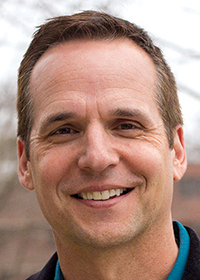Manage the mutation
by November 17, 2022 12:02 pm 554 views

In the 1950s, kids with cystic fibrosis (CF) rarely lived past the age of 10. The lack of understanding of the genetic defect that caused CF left medical researchers aimlessly searching for solutions.
In 1989, after extensive research of human DNA, Dr. Francis Collins and his team of researchers discovered that the cause of CF for most patients was the deletion of three letters from the DNA code in the protein-coding part of a previously unknown gene. Eventually, Dr. Collins and his team showed that the mutation within this gene accounted for nearly all cases of CF. This team’s research paved the way for better treatment of CF. The precision with which human DNA produces an instruction manual for biological human development is astounding.
Just like human DNA, organizations carry their own DNA. Every organization is established on a set of building blocks or core beliefs. It is these building blocks that establish the unique identity of the organization. In the same way that human DNA cell mutation can cause disease, so can the “mutation” of core beliefs. If the leaders within an organization do not intentionally demonstrate and practice core beliefs, the organization may be risking “organizational disease.”
An extreme example of this is the recent decision by the founder of Patagonia, Yvon Chouinard, whose core beliefs include protecting undeveloped land and fighting climate change. His passion for protecting the DNA of his company led him to give his company away. Chouinard will transfer ownership of the company to Patagonia Purpose Trust and the Holdfast Collective. The Patagonia Purpose Trust was created to protect the company’s values. Since it holds the company’s voting stock, The Patagonia Purpose Trust has the right to certify critical decisions for its future.

For an organization to flourish, its leaders must constantly be on the lookout for core belief “mutations.” Mutation happens when a leader’s decisions are inconsistent with core organizational beliefs or values. For example, mutation begins when an organization values inclusion but one department leader only hires or promotes employees who are just like them. Consequently, it is vital that leaders “manage the mutation” by assessing how consistent their decisions are with core organizational beliefs.
As a leader, you might consider the following reflection exercise. Think through the last three decisions you made. How consistent were your decisions with the core beliefs and values of the organization? Now, think through the last important decision someone on your team made. How consistent was their decision with the core beliefs and values of the organization? And finally, what would the last major decision made by your organization say about your core values?
The whirlwind of organizational demands can cause a leader to temporarily lose sight of the DNA that made them successful. Wise leaders will make the time to identify “mutations” to ensure healthy organizational DNA.
Erik Dees is a partner with Milestone Leadership. Milestone Leadership’s Mission is to “Build Leaders Worth Following.” He can be reached at 319-504-3083. The opinions expressed are those of the author.
